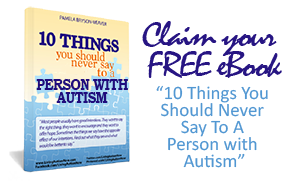
I was driving along Lakeshore Drive on my way to Sobey’s when this other driver cut in front of me– twice! I have seen people running a red light, not pulling over for a siren, not following school ground speed limit, and not giving a care on whether their actions can affect others or not. That sad thing is– these people do not have autism. Yet, each of them is given a driver’s license without any question.
To someone with autism, applying for one can be a long hurdle. Questions on things that involved language such as sequencing or following directions have always been a contention when getting one. Some individuals with high functioning autism may get answers to their pleas but to many, the consequences can be emotionally and mentally brutal.
I have seen and read the horrors of how some individuals with autism as well as Asperger’s have been shunned by authorities in their bid for “road freedom.” Some even have the gall to call them “unfit” or consider them as “road hazards.” These are hurtful words creating a gaping hole in one’s soul, a source of internal tribulation, in a world devoid of autism ACCEPTANCE.
Amid all these, I have always contemplated on pushing John to get driving lessons. Admittedly, my husband and I are not getting any younger and having extra set of hands in time of emergency is never a bad thing. He is quite excellent in following road and traffic rules and regulations. He can also communicate well with others and have been educated about the BeSafe campaign program. I am more concerned with those minuscule details that may escape his senses leading to issues on the road, which may cause him harm or to that of other road users.
A constant dilemma, some of my friends however are quite supportive and have always egged me to give it a try. It was highly recommended to get the assistance of a young driver’s program as well as that of a speech language pathologist, that is, if required for therapy on certain language skills like predicting, traffic vocabularry, sequencing and turn-taking, mapping skills, rote memory, communication, problem solving, and other aspects of becoming a safe and defensive driver. Keep in mind that driving also involves social and pragmatic skills. These skills require focus so individuals with autism can learn how to become safe road users.
Today, I saw someone run a stop sign again. Uggh! I am quite sure she does not have autism. John pointed out why such a behavior should never be done while someone is on the road. He deemed it irresponsible. I believe, there’s enough reason in the universe for me to find a way for him to learn how to drive.
It may not be now, but pretty sooooon.
Photo Credits: IDriveSafely
Do you have any driving experience, anecdotes, key learning or lessons to share? Write to us so others may know and relate to them. Cheers!
#Autism #DrivingWithAutism #LivingAutismDayByDay #AutismDriver #DriveAutism #AdultAutism #YoungDriver

As a Newbie, I am continuously browsing online for articles that can be of assistance to me. Thank you
Some really fantastic info , Glad I detected this.